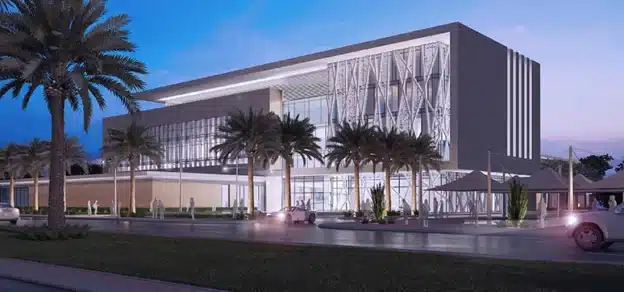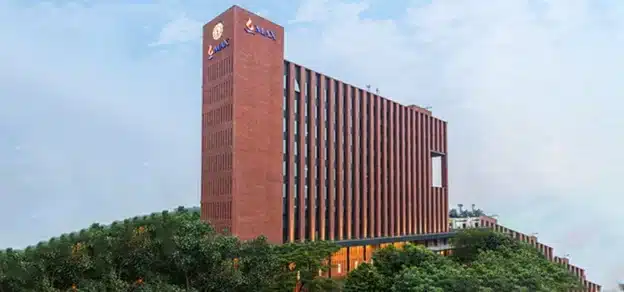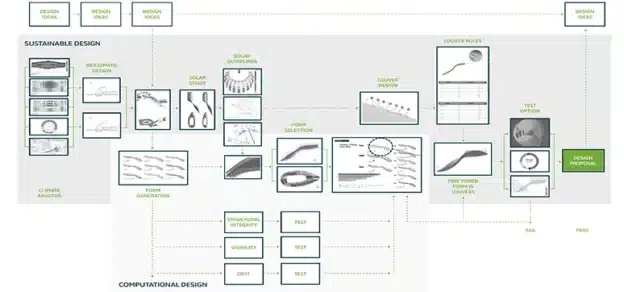The construction industry’s carbon footprint is a pressing global concern, with buildings accounting for a significant portion of greenhouse gas emissions. The article highlights the value of understanding and addressing the embodied carbon in buildings and how crucial it is in reducing their environmental impact. Sustainable material selection, efficient construction techniques, and stakeholders such as designers, developers, and contractors can collectively drive the reduction of embodied carbon and pave the way for a greener and more sustainable future in the built environment.
Understanding Building Sector’s Carbon Footprint
The construction industry plays a significant role in global carbon emissions, with buildings responsible for a substantial share. Operational energy use and embodied carbon emissions are major contributors, with operational energy accounting for 30-40% and embodied carbon contributing 11-28% of building-related emissions with the rest of the emission coming from other sources such as transportation, waste generation, and resource.

The percentage can vary based on factors such as regional energy sources, building types, and the level of energy efficiency in the building stock. Addressing operational energy efficiency, reducing embodied carbon, promoting sustainable transportation, implementing effective waste management, and optimising resource use are crucial steps in mitigating the carbon footprint of buildings. By prioritising these areas, the building sector can make significant strides in reducing greenhouse gas emissions and contributing to global climate action.
Need To Strike a Balance: Recognising the Importance of Operational Energy and Embodied Carbon
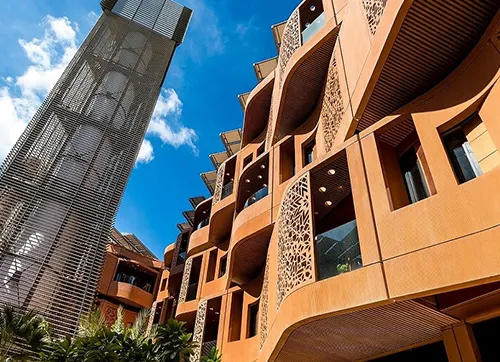
Operational energy in buildings is often prioritised for reduction due to its immediate impact, direct control, energy efficiency gains, and existing regulatory frameworks. Building owners and occupants can readily implement energy-efficient measures to achieve tangible reductions in greenhouse gas emissions. However, it is essential to recognise that solely focusing on operational energy overlooks the significant carbon emissions associated with embodied carbon in building materials. Neglecting embodied carbon misses opportunities for substantial emissions reductions.
To achieve comprehensive sustainability, it is crucial to adopt a balanced approach that addresses both operational energy and embodied carbon. This involves promoting energy-efficient design, selecting low-carbon materials, optimising construction practices, and embracing circular economy principles. By considering both aspects, we can maximise the potential for meaningful and long lasting emissions reductions in the building sector.
Exploring Embodied Carbon in Buildings
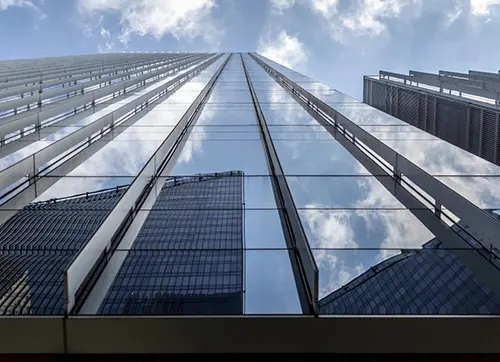
Embodied carbon in buildings refers to the total amount of greenhouse gas (GHG) emissions associated with the entire life cycle of construction materials used in building projects. It encompasses the carbon emissions released during the extraction, production, transportation, and installation of building materials, as well as the emissions from their eventual disposal or recycling at the end of a building’s life.
Embodied carbon takes into account all stages, from the sourcing of raw materials to the manufacturing processes and construction activities. It is an important aspect to consider in sustainable building practices as it highlights the environmental impact associated with the materials used and provides insights into the carbon footprint of a building beyond just its operational energy consumption. By focusing on reducing embodied carbon, we can make significant strides in achieving sustainable and environmentally friendly buildings.
Unveiling the Significance: Building Envelope’s Contribution to Embodied Carbon
According to research conducted by the Whole Building Design Guide (WBDG), the building envelope can contribute up to 15-20% of a building’s total embodied carbon. This estimate includes materials used for walls, roofs, windows, doors, and other components that make up the envelope. However, it’s important to note that this percentage can vary based on the specific characteristics of the building and its location.

The façade, being the protective and visually appealing envelope of a building, presents immense opportunities for adopting innovative strategies that minimise environmental impact. The type of materials used in the façade is a crucial factor in determining its contribution to embodied carbon. Traditional materials like concrete, steel, and aluminium tend to have higher carbon footprints due to the energy-intensive manufacturing processes involved.
It is important to remember that the embodied carbon of a building is a complex calculation that encompasses the entire life cycle, including material extraction, production, transportation, construction, maintenance, and eventual demolition. While the building envelope plays a significant role, other elements, such as structural systems, interior finishes, and mechanical systems, also contribute to the overall embodied carbon of a building.
Leveraging Life Cycle Assessment for Sustainable Decision-Making
Life Cycle Assessment (LCA) is a valuable tool that helps reduce embodied carbon in buildings. By conducting an LCA, hotspots of high carbon emissions can be identified, guiding targeted interventions. LCA enables the comparison of materials based on their embodied carbon, empowering informed choices that prioritise low-carbon alternatives. It also evaluates different design options & construction techniques to minimise carbon emissions throughout the building’s life cycle.
LCA facilitates the optimisation of designs, ensuring energy efficiency and reduced environmental impact. It assesses construction processes, promoting efficient material usage, waste reduction, and the adoption of low-carbon construction methods. Moreover, LCA provides quantifiable data that aids communication with stakeholders and supports informed decision-making. By utilising LCA, stakeholders can make sustainable choices that lead to significant reductions in embodied carbon, promoting the transition to more environmentally friendly buildings.
Harnessing the Power of Sustainable Materials The MENA region (Middle East and North Africa) is witnessing a growing market for sustainable materials with low embodied carbon, reflecting an increasing commitment to environmental sustainability in the construction industry. This emerging market offers a range of innovative materials and technologies aimed at reducing the carbon footprint associated with building projects. Sustainable materials play a crucial role in reducing the embodied carbon of the building envelope.
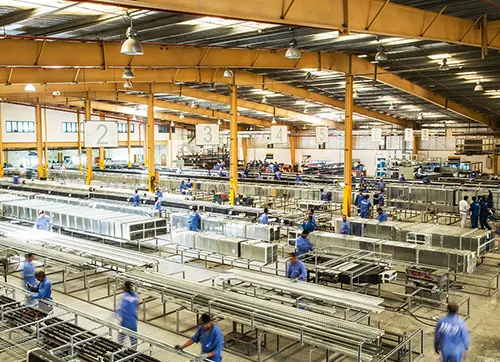
The use of recycled materials, such as recycled steel, concrete, or reclaimed bricks, can significantly lower the carbon footprint by diverting waste from landfills and reducing the need for new material extraction. A sustainable building should be constructed using materials that have minimal embodied energy to help to minimise the environmental impact (greenhouse gas emission, resource depletion, etc.) throughout their life cycle. It is recommended to use materials that have their life-cycle information readily available and are environmentally, socially, and economically preferable.
To promote sustainability and reduce the environmental impact of construction, several alternatives and suggestions can be considered. Within the region, as sustainability consultants, to minimise resource consumption and support recycling efforts, we have recommended using structural steel with at least 20% recycled content for 50% of the steel components. Similarly, projects can select reinforcement materials with a minimum of 60% recycled content for 20% of the total reinforcement used in concrete structures. When it comes to ready-mix concrete, in substructures, we can consider replacing 25% of the cement content with fly-ash, to reduce the carbon footprint associated with cement production. It is important to coordinate with the structural engineers to evaluate the impacts alternative materials can have on the desired strength and performance. The specification should be drafted in agreement with the structural design, and material availability, and considering cost impact.
Did You Know? Glass Plays a Key Role in the Embodied Carbon of Façades: Discoveries from a Comparative Study
The study on the embodied carbon contribution of glass in various façade systems reveals several key observations. The findings indicate that the embodied carbon of façades can vary significantly, ranging from 160 to 520 kgCO2e/ m2, depending on the design and system type. Glass emerges as a significant contributor to the embodied carbon of façades, often ranking second only to aluminium. Furthermore, the service life of Insulated Glazing Units (IGUs), typically around 30 years, plays a role in the embodied carbon impact of glass, as the replacement of IGUs within the façade’s lifetime adds to its carbon footprint.
The study found that the proportion of embodied carbon attributed to glass can vary significantly across different façade systems, ranging from 26% to 60%. These high values highlight both the opportunity and responsibility of the glass industry to assist designers in reducing the embodied carbon of their projects. As other industries undergo decarbonisation, it is anticipated that the contribution of glass to the embodied carbon of façades may further increase. This underscores the importance of the glass industry embarking on its decarbonisation journey to align with broader sustainability goals and support the reduction of embodied carbon in building construction.
EPDs: Empowering Sustainable Choices and Making a Difference in the MENA Region
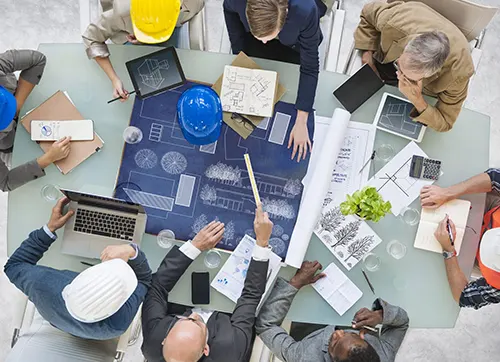
Environmental Product Declarations (EPDs) play a crucial role in reducing embodied carbon in the construction industry. By providing transparent and standardised information about the environmental impact of materials, EPDs enable stakeholders to make informed decisions and prioritise low-carbon alternatives. EPDs contain valuable data on factors such as carbon emissions, energy consumption, and resource depletion throughout a product’s lifecycle. The MENA region is witnessing gradual growth in the market for materials with Environmental Product Declarations (EPDs). Green building certifications such as LEED, MOSTADAM, and Estidama Pearl Rating System further drive the demand for environmentally friendly materials and documentation of their embodied carbon.
Major developers, architects, and contractors are increasingly looking for products that meet sustainability criteria and provide transparent data on environmental impact. However, there is still a need to encourage more suppliers to provide EPDs, and collaboration and awareness are crucial in this regard. Raising awareness about embodied carbon reduction and the benefits of EPDs can drive demand and incentivise suppliers to offer sustainable options. Incorporating EPDs as a procurement requirement can also promote the adoption of low-carbon materials by public and private sector organisations.
Transforming Construction Practices: Unveiling the Potential of Prefabrication in Lowering Embodied Carbon
The design and construction techniques employed can also influence the amount of embodied carbon in the building envelope. Techniques such as prefabrication and modular construction can reduce waste and optimise material usage, thereby lowering embodied carbon. Studies and industry reports suggest that prefabricated construction methods can lead to embodied carbon reductions ranging from 15% to 50% compared to conventional on-site construction. However, it’s important to note that these percentages are approximate and can vary based on project-specific factors.
It is essential to conduct a project-specific LCA to accurately determine the percentage difference in embodied carbon between prefabricated and conventional on-site construction methods. This assessment considers the unique characteristics and parameters of the project, such as the building design, materials used, transportation distances, energy efficiency measures, and end-of-life considerations. Such an LCA provides a comprehensive evaluation of the environmental impact throughout the entire life cycle of the building and offers a more precise understanding of the percentage difference in embodied carbon.
Driving Sustainable Change: The Crucial Roles of Stakeholders in Reducing Embodied Carbon

In the quest to reduce embodied carbon in the construction industry, stakeholders have crucial roles to play. Designers should integrate sustainable principles, whereas developers should set goals and demand transparency. Contractors should be directed to implement efficient practices, and material suppliers should be asked to offer low-carbon alternatives. Collaboration among stakeholders is key. Industry associations, standards organisations, and governments should establish guidelines, certifications, and policies to promote sustainability.
By fulfilling their roles and collaborating effectively, stakeholders can collectively drive the reduction of embodied carbon. Through sustainable design, material selection, efficient practices, and supportive policies, we can contribute to creating an environmentally conscious built environment.
Addressing Embodied Carbon: Fulfilling COP28 Commitments through Sustainable Construction
Addressing embodied carbon in building construction is crucial for developers to fulfil their COP28 commitments and contribute to global climate action. This involves selecting low-carbon materials, conducting life cycle assessments, and adopting energy-efficient designs. Engaging with suppliers, promoting collaboration across the supply chain, and advocating for low-carbon practices enhance their commitment.
Transparent reporting of embodied carbon emissions fosters accountability and knowledge sharing. Offsetting strategies and carbon neutrality goals further demonstrate dedication to COP28 objectives and sustainable development. By prioritising these actions, developers can mitigate climate change and pave the way for a greener future.
To conclude, reducing embodied carbon in buildings is a critical step towards creating sustainable and environmentally friendly structures. Through the adoption of low-carbon materials, strategies such as prefabrication, and the promotion of materials with EPDs, we can make significant progress in reducing the environmental impact of its building sector. With collaboration and commitment from all stakeholders, a greener and more sustainable future for the built environment is within reach. Additionally, incorporating energy-efficient design principles, passive strategies, and renewable energy systems into the façade can help offset operational carbon emissions, making the overall environmental impact of the building envelope more favourable.





